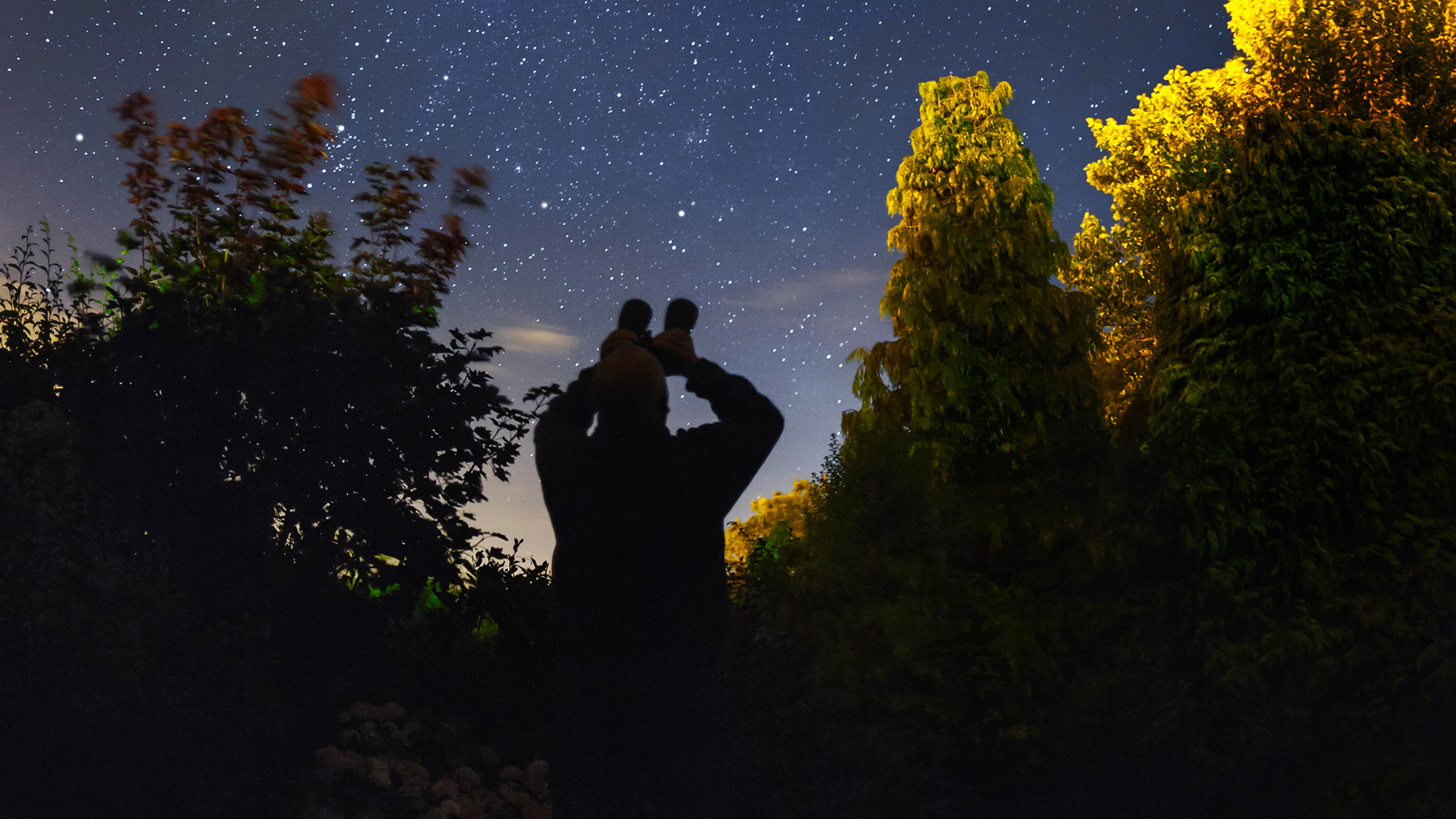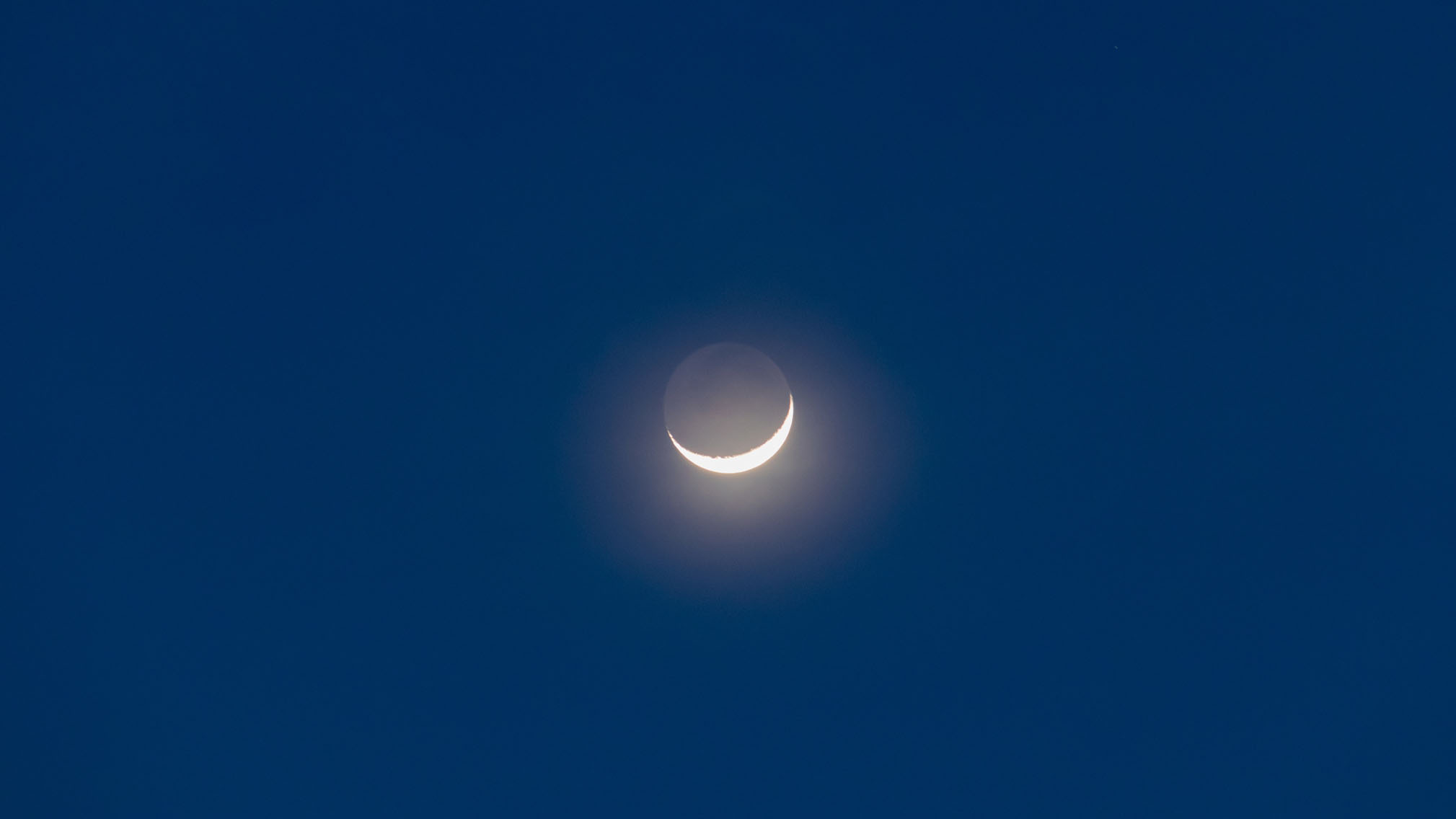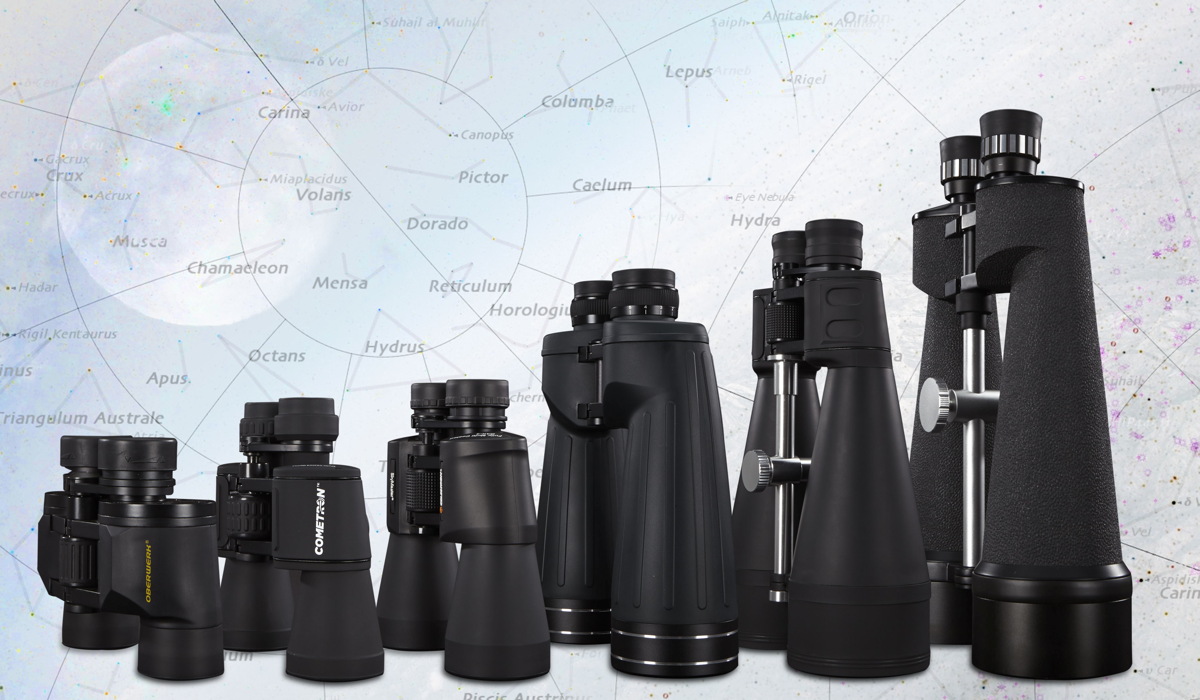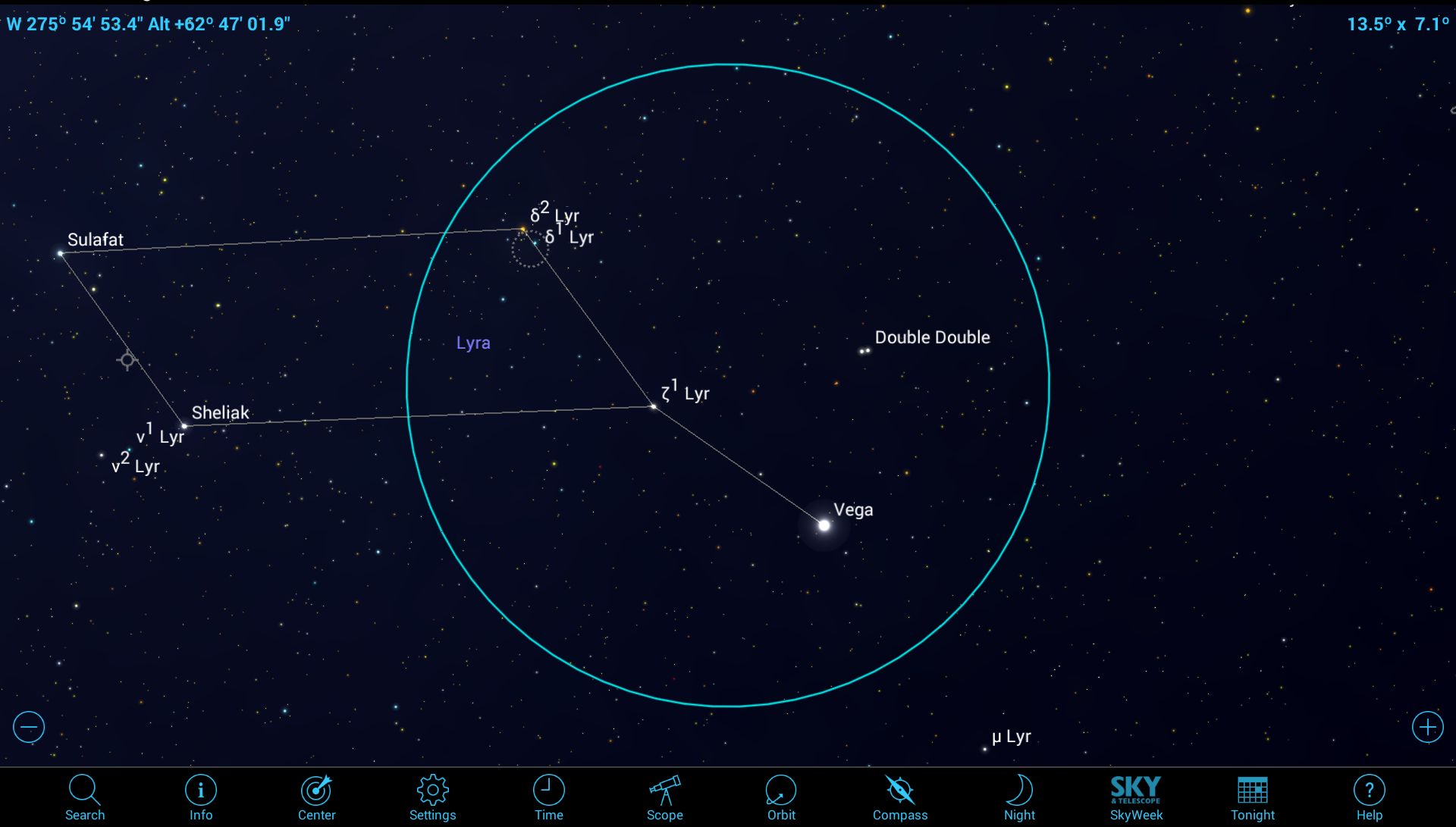
If you're new to the world of astronomy, stargazing with binoculars might not be the first thing that comes to mind because we're so used to the idea of pointing telescopes up at the night sky instead. But purchasing a pair of the best binoculars is one of the best moves you can make to enhance your stargazing experience. The broad field of view offered by binoculars can offer a better view of larger objects like star clusters and it also makes them ideal for scanning the sky to search for your next point of interest. What's more, you can get a high-quality pair of binoculars at a much more affordable price than the best telescopes, making them a great way to test the waters and see if you want to invest more in your stargazing hobby longer-term.
This guide will equip you with all the knowledge you need to get started on your binocular stargazing journey. We'll be explaining what to look for in a pair of stargazing binoculars, how to use them effectively and how to find the best objects to view with them on your next night-time adventure.
If you're looking for more guidance on which binoculars to buy, we also have guides to the best binoculars for long distance viewing and the best compact binoculars for those looking for a lightweight travel companion. And if your little ones are looking to get in on the fun, then we have a guide to the best binoculars for kids that are suitable for small hands and faces.
Why use binoculars over a telescope?
If you think a telescope is better for astronomy than stargazing with binoculars, then you're misunderstanding the nature of the night sky. It's in 3D, has depth and contains objects of vastly different sizes.
While a telescope's magnification is useful for looking at deep-sky objects with a small apparent size close-up, their restricted field of view is not as good for studying closer objects or those with a larger apparent size.
There are three other reasons why stargazing with binoculars can trump a telescope — they're much more affordable, ridiculously easy to use and show a right-side-up image, unlike many telescopes which show everything upside-down.
What to point your binoculars at
Binoculars can be used to observe an array of celestial objects, including key objects from our own solar system. You'll be able to view the sun, but be sure to use adequate protection and solar filters on both optical elements (check out our guide to safely observing the sun if you're unsure). You can also easily view the moon and brighter planets like Mercury, Venus, Mars, Jupiter and Saturn through a good pair of binoculars. If they are nearing opposition (when these planets appear closest to Earth in their relative orbits), their surface diameter will appear larger and it may well be possible to discern surface detail as well brighter moons like Jupiter's Io, Europa, Ganymede and Callisto.
Deep-sky objects can also be viewed with binoculars. These tend to be the brighter examples of galaxies and nebulas, with classic examples being the Andromeda Galaxy (M31) and the Orion Nebula (M42). Brighter stars can also be observed as bright, colorful pin-points of light. Aldebaran and Betelgeuse appear more orange-like in color, while Vega and Sirius appear more blue/white visually.
Binoculars can be much more helpful than telescopes at star-hopping to locate these deep-sky objects. Expect these objects to appear as faint, glowing clouds in the eyepiece. That said, color will only be distinguishable if much larger aperture instruments are used.
When to look at the Moon using binoculars

The most obvious target most observers with binoculars will seek is the moon. It is bright, apparently 'large' in the night-sky and constantly evolving through one lunar calendar month, exhibiting changing phases. Each day, you can view different details of the lunar surface. The lunar seas and the larger, more discernible craters are the most noticeable. In the days after new-moon, the crescent moon phase is exhibited in the western sky after sunset. During this time, 'earthshine' (light reflected from the Earth through our atmosphere) lights the 'dark' side of the moon.
As we go through the lunar month, the moon will then develop into the first-quarter and waxing-gibbous phases. This is a good time to observe lunar craters and seas, where we observe the division between day and night on the moon, otherwise known as the 'terminator.' The craters Copernicus, Tycho and Plato are notable examples. Mountain ranges can also be observed, including Montes Apenninus and the evermore famous Sea of Tranquility — where the Apollo Mission landed and where Neil Armstrong took his first steps on the moon.
When full, the moon is fully illuminated and appears somewhat 'flat' and uncomfortably bright — you might even want to use moon filters. You can also observe it at moonrise for an enigmatic view of this natural satellite.
How to choose a pair of binoculars for stargazing
The ideal binoculars for astronomy balance magnification over light-gathering capability. For beginners, a low magnification is recommended, somewhere between x7 to x10 magnification, with an aperture of around 42-52mm. Models recognised as 7 x 42 and 10 x 50 and similar specifications are small and lightweight enough to be held reasonably steady without needing support. They will provide a wide field of view and bright image from a dark location. One of our favorite pairs that features in our best binoculars guide is the Celestron TrailSeeker 8x42.
If wearing glasses, it is worth considering the distance of your eyes from the eyepieces. Eye relief can make all the difference to comfort in observation. Therefore, a longer eye relief (usually over 17 mm) is advised.
Other features to look out for are Porro prisms for enhanced comfort, multi-coated optics for enhanced contrast and barium crown (BaK-4) glass. Stargazing-centric binoculars will have all of these elements. For more detailed advice, check out our dedicated guide to choosing stargazing binoculars.

How to focus your binoculars
Most binoculars have a diopter ring to compensate for the difference in eyesight in each of your eyes. Calibrating the focus is simple. During daylight, put a lens cap over the right barrel and use the central focus knob to achieve a nicely focused image for your left eye. Repeat for your right eye. You'll need to repeat this if you share binoculars with someone with different eyesight.
How to hold your binoculars steady
If your subjects appear to be unsteady and 'wiggling' around, that is because our bodies move constantly and you need to stay as still as possible to obtain the sharpest image possible.
For added support, always hold your binoculars at the tube and not the eyepiece for even weight distribution. Bring your elbows close to your chest for added stabilization. Even better: lean up against a wall, sit in a chair or even use a tripod if that suits you. Some binoculars with larger magnification (and therefore larger amounts of wobble) will come with an adapter to enable you to mount them to a tripod — especially helpful for longer viewing sessions.
How to find objects with your binoculars
Star charts and the latest mobile stargazing apps are the modern basics used to familiarize oneself with the night sky — SkySafari 7 Pro consistently ranks as one of our favorites. It is best to identify the major constellations first by distinguishing the brighter stars of each. Once you learn the patterns or 'asterisms', as they are known, you can begin to 'star-hop' from one star to the next. Follow your star chart or app until you reach the direction of your intended target. Scan the area in a circular motion directly before your eyes to locate your subject.

How to use averted vision to see more
When observing fainter objects, such as galaxies. The first reaction may be disappointment as what you see may not look like what you would expect in a NASA image, for example. This is because the chances are, you are looking straight at your subject. For a better view, it is best to use averted vision. Peripheral vision, as it is also known, is most sensitive to brightness, so look slightly to the side of the faint glowing cloud and your eyes will be sensitive to more light.
When not to use binoculars
Meteor showers are the classic example, there is a tendency to reach for the telescope or binoculars for these. That is not the case; you just need your eyes! Scanning larger areas of the sky will increase your chances of seeing more meteors or 'shooting-stars'. The same goes for the Aurora Borealis — look north and search for the curtains and pillars!
Binoculars or any other optical instruments should be avoided when locating planets near the sun when it is visible above the local horizon. This includes solar eclipses during the partial phases. It must be reiterated that binoculars (or telescopes) must only be used with adequate protection — solar filters over the front of both elements. Head over to our guide to solar viewing gear to find out what you'll need. Otherwise, binoculars can only be used during a solar eclipse if the eclipse is total and you're just observing the corona. Read more about viewing eclipses safely in our guide to solar eclipse glasses.
Used with care, binoculars can provide enjoyment for a lifetime of observing celestial targets without having to invest in more complicated telescope setups.







